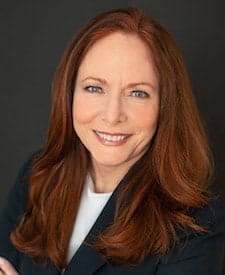By Pamela J. Gallagher
In my decades of leadership in healthcare, I have learned the hard way that not every person with a “C” in their title or who has been appointed to a board of directors understands what it means to lead. These deficient “leaders” are always looking for a magical solution to their organization’s issues, without considering that their insufficient leadership might be their common source. In turn, the inability to lead results in the leader deflecting attention from their deficiencies in performing their role by creating division among staff, diverting attention to nonessential issues or programs, and stirring up dissension.
Leadership by division, diversion, and dissension
Leadership by division
It is impossible for every team member to agree all the time in every situation. In managing my own teams, I know that anyone who always agrees with me is not telling me the truth or is not thinking critically about the direction our organization is moving. I am not always right, and I am always learning. Open conversation makes me a better leader and helps our organization achieve its mission.
Instead of creating a team where there is meaningful dialogue and professional disagreement, toxic leadership by division creates an us-versus-them mentality within the staff, labeling those who disagree with the leader’s philosophy, ideas, or actions as a danger to the health of the organization. This leaves no room for the respectful debate that is such a critical component of moving an idea or initiative forward.
Leadership by diversion
Unfit leaders never seem to be sure what direction they’re going. The truth is that it is very difficult to pursue an organization’s mission, vision, and values with excellence while also seeking to increase your own power and authority.
I’ve been part of organizations with boards of directors that are unmoored from the organization’s mission, purposely creating chaos behind the scenes so that no one is paying attention to their insufficient leadership. Because they do not have the skills to address the real threats to the organization, they send executive teams and employees on a wild goose chase after lesser problems that don’t get at the root of the issue.
Leadership by dissension
We’ve all worked in organizations where an executive was hired or fired on purely political grounds, taking the fall for something that was not entirely their fault. Leaders who are unable to encourage unity without insisting on uniformity often revert to stirring up dissension about a particular leader or initiative that doesn’t fall in line behind their desires. They will often select a target to point the finger at and gang up on, to deflect attention from the role they have played in the organization’s shortcomings.
Even when an organization is experiencing rocky terrain, I will gladly support a leader who consistently sets the tone and drives toward living a vision and mission that aligns with my beliefs. Hard work, dedication, loyalty, and respect from employees are all earned, not coerced, by a good leader.
No one is perfect, and I am proof of that. However, the unending pursuit of improvement makes every day a little better than the one before. Leading with a continual desire to grow personally and professionally is a healthier way to influence those around you than division, diversion, and dissension.
If you are aware of this unhealthy dynamic in your organization, are you taking action to move things in a positive direction, or are you allowing yourself to be carried along by this toxic tide? How can you use whatever power and influence that you have to help the organization and every person around you thrive?
Pamela J. Gallagher is a senior healthcare finance executive with 20 years of experience balancing the reality of finance with the delivery of excellent patient care. As a consultant she instills financial discipline, streamlines processes to maximize revenue, and reduces expenses for immediate improvements and long-term results. She writes on healthcare, finance, and technology at gallaghersresulting.com.
Resources
Leadership By Diversion, Distraction, And Division, Rep. Gregory Meeks
The Crucial Difference Between Distraction and Diversion, Forge
The Editorial Team at Healthcare Business Today is made up of skilled healthcare writers and experts, led by our managing editor, Daniel Casciato, who has over 25 years of experience in healthcare writing. Since 1998, we have produced compelling and informative content for numerous publications, establishing ourselves as a trusted resource for health and wellness information. We offer readers access to fresh health, medicine, science, and technology developments and the latest in patient news, emphasizing how these developments affect our lives.








